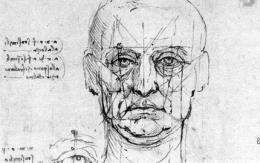New research about facial recognition turns common wisdom on its head

(Medical Xpress) -- A team of researchers that includes a USC scientist has methodically demonstrated that a face's features or constituents – more than the face per se – are the key to recognizing a person.
Their study, which goes against the common belief that brains process faces "holistically," appears this month in Psychological Science.
In addition to shedding light on the way the brain functions, these results may help scientists understand rare facial recognition disorders.
Humans are great at recognizing faces. There are even regions in the brain that are specifically associated with face perception – the most well-known one is the fusiform gyrus in the temporal lobe.
Common wisdom has it that humans recognize the face "holistically," meaning that there is something about the picture created by the entire face – the particular arrangement of a face's eyes, nose, and mouth and not just these features themselves – that makes it easier for the human brain to make a positive ID.
That common wisdom appears to be wrong.
"There is this belief that faces are special," said the study's coauthor Bosco Tjan, associate professor of psychology at the USC Dornsife College of Letters, Arts and Sciences. "But why? How is the face special?"
To use an automotive metaphor, would it be easier for a car aficionado to identify a '58 Corvette by its distinctive quad headlights, chunky chrome grille and swoop on the side – or if shown the car that all these pieces make when added together?
Tjan and collaborators Jason M. Gold, associate professor of psychology at Indiana University, Bloomington and IU undergraduate student Patrick J. Mundy tested participants on how accurately they were able to identify a set of faces by the parts of those faces – the nose, left eye, right eye or mouth.
Then, using a well-established formula that Tjan developed in an earlier study, the researchers extrapolated how accurately each participant should be able to identify an entire face.
If humans were better at face recognition than nose or eye recognition, one would expect each participant to do a better job of identification when the features are all arranged together into a face. But in fact, the participants did a little worse than predicted by Tjan's formula.
Facial recognition, it appears, hinges on recognizing the face's features more than the "holistic" picture they add up to create.















